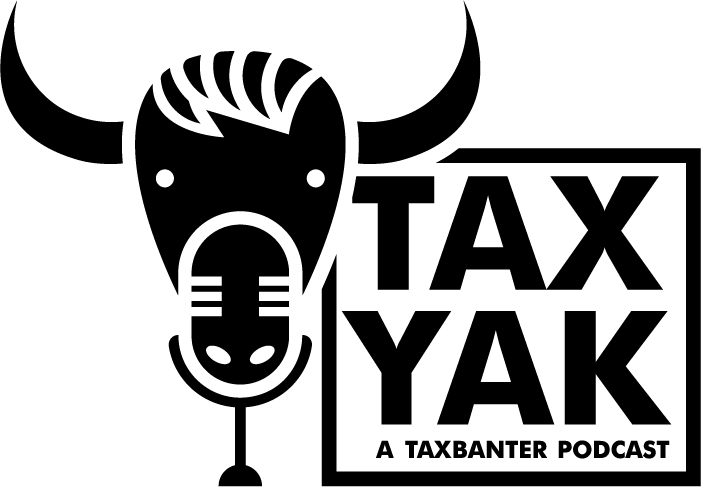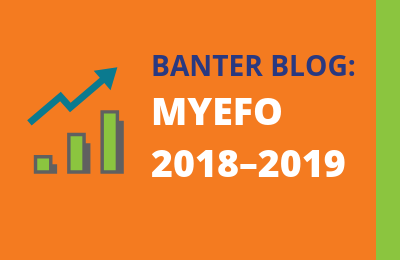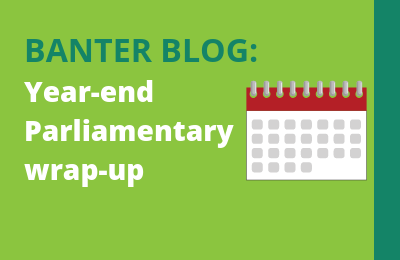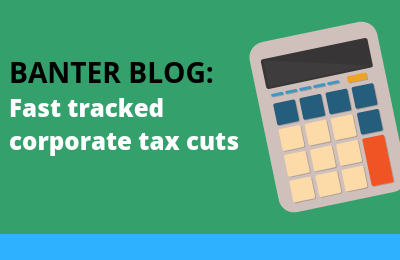On 17 December 2018, the Government released the Mid-Year Economic and Fiscal Outlook 2018–19 (MYEFO). The MYEFO provides updated information on the Government’s fiscal position and includes policy decisions taken since the 2018–19 Federal Budget was handed down on 8 May 2018.
The key tax announcements and measures contained in the MYEFO are summarised below.
Previously known measures
Corporate tax cuts for large companies
Background
The Government’s original Enterprise Tax Plan — which was announced as part of the 2016–17 Federal Budget — proposed to reduce the corporate tax rate for all companies to 25 per cent over a 10-year period by progressively phasing in the lower tax rate from 2019–20 to 2026–27.
Following the defeat of the Treasury Laws Amendment (Enterprise Tax Plan No. 2) Bill 2017 in the Senate on 22 August 2018, the former Prime Minister, the Minister for Finance and the former Treasurer announced in a joint press conference on 22 August 2018 that the Government would not proceed with the tax cuts for large companies.
 Note
Note
Our Banter Blog titled Certainty at last for base rate entities … or not? from 3 October 2018 explains the enacted measures which apply to companies with an aggregated turnover of less than $50 million.
MYEFO announcement
The Government has confirmed in the MYEFO that it will not proceed with reducing the tax rate for companies with an aggregated turnover of $50 million or more, as announced on 22 August 2018. These companies will remain on the 30 per cent tax rate.
Fast-tracked tax cuts for small and medium companies
Background
Following the delivery of a reduced tax rate for companies with an aggregated turnover of less than $50 million from 1 July 2017, the Government fast-tracked these changes in October 2018 by delivering this tax relief five years earlier than planned.
Unincorporated businesses with aggregated turnover of less than $5 million will benefit via the small business income tax offset (SBITO) from an increase in the discount rate.
Our Banter Blog titled Ten-year plan for corporate tax cuts has now been fast tracked from 31 October 2018 explains in more detail how:
(a) the tax rate for companies that are base rate entities will decrease from its current rate of 27.5 per cent to:
- 26 per cent in 2020–21 (instead of in 2025–26);
- 25 per cent from 2021–22 (instead of from 2026–27); and
(b) the SBITO discount rate will increase from its current rate of 8 per cent to:
- 13 per cent in 2020–21 (instead of in 2025–26);
- 16 per cent in 2021–22 (instead of from 2026–27).
 Note
Note
A $1,000 cap still applies to the SBITO.
MYEFO Announcement
The Government has confirmed in the MYEFO that the reduction of the corporate tax rate and the increase in the SBITO discount have been fast-tracked.
GST and feminine hygiene products
Background
Feminine hygiene products were not GST-free goods prior to 2019 and were therefore subject to GST. On 3 October 2018, the Commonwealth, states and territories agreed at a Council on Federal Financial Relations meeting to remove GST from feminine hygiene products.
The A New Tax System (Goods and Services Tax) (GST-free Health Goods) Determination 2018 was registered on 28 November 2018 and declares certain feminine hygiene products to be GST-free from 1 January 2019.
MYEFO Announcement
The GST-free treatment of feminine hygiene products was confirmed by the Government in the MYEFO.
Date of effect: 1 January 2019
Self-assessment of effective life for intangible assets
Background
Schedule 2 to the Treasury Laws Amendment (2017 Enterprise Incentives No. 1) Bill 2017 proposed to allow taxpayers the choice to self-assess the effective life of certain intangible depreciating assets they start to hold on or after 1 July 2016.
 Note
Note
This Bill also proposes to supplement the existing ‘same business test’ with an alternative ‘similar business test’ (for losses made from 1 July 2015) for the purposes of working out whether a company can deduct tax losses incurred and net capital losses made in previous income years.
On 5 December 2018, the Senate agreed to a Government amendment to remove Schedule 2 from the Bill. Given the proposed application date of 1 July 2016, the likely further delay in the passage of the Bill and a lack of parliamentary support, the Government decided not to proceed with the measure, in order to eliminate the current uncertainty for taxpayers. By omitting Schedule 2, taxpayers will no longer be allowed to avail themselves of this self-assessment option.
Status of measure
The Bill was introduced into Parliament on 30 March 2017 and has been before the Senate since 22 June 2017. The Bill is now required to return to the House to consider the amendments made by the Senate on 5 December 2018. Accordingly, the Bill remains in limbo until at least 12 February 2019.
MYEFO Announcement
The Government has confirmed in the MYEFO that it will not proceed with this unlegislated measure from the MYEFO 2015–16 which would have allowed taxpayers the choice to self-assess the effective life of certain intangible depreciating assets.
Superannuation — simplifying the work test exemption for recent retirees
Background
In the 2018–19 Federal Budget, the Government announced that it would provide a one-year exemption from the ‘work test’ to allow eligible recent retirees to boost their superannuation balances.
On 2 October 2018, exposure draft legislation and draft regulations titled Treasury Laws Amendment (Measures for a later sitting) Bill 2018: Work test exemption for recent retirees was released for comment. The regulations, once registered, will allow Australians aged 65 to 74 with a total superannuation balance of less than $300,000 to make voluntary non-concessional contributions — up to the non-concessional cap of $300,000 under the three-year bring-forward rule — for 12 months from the end of the financial year in which they last met the work test.
Further information is available in the Assistant Treasurer’s media release Work Test Exemption for Recent Retirees of 7 December 2018.
MYEFO Announcement
This policy was confirmed by the Government in the MYEFO.
Date of effect: 1 July 2019
New measures
Proposed SG Amnesty
Background
On 24 May 2018, the Government announced a proposed 12-month Superannuation Guarantee (SG) Amnesty to allow non-complying employers to self-correct any unpaid SG amounts dating back to 1992. The Amnesty period is proposed to start on 24 May 2018 and end on 23 May 2019.
Our Banter Blogs titled The New Superannuation Guarantee Amnesty from 13 June 2018, SG Amnesty — Q&A from 14 August 2018 and The SG Amnesty: What should employers do? from 14 September 2018 explain the proposed measures.
The Treasury Laws Amendment (2018 Superannuation Measures No. 1) Bill 2018 — which has been before the Senate since 25 June 2018 — proposes to impose a minimum penalty on employers who could have come forward during the Amnesty period but did not and are subsequently caught.
MYEFO Announcement
The Government has announced in the MYEFO that it will increase the minimum penalty from (what was proposed to be) 50 per cent to 100 per cent of the SG charge for employers who could have come forward under the SG Amnesty but did not and were subsequently caught.
Proposed cash payment limit
Background
In the 2018–19 Federal Budget, and in response to the Black Economy Taskforce Final Report, the Government proposed an Economy-Wide Cash Payment Limit of $10,000. The Final Report recommended (Recommendation 3.1) the introduction of a cash payment limit that removes the ability of any individual or business to make a single transaction in cash in excess of $10,000 to businesses for goods and services. Transactions in excess of this amount would need to be made through the electronic payment system or by cheque.
On 25 May 2018, the Government released a consultation paper titled Introducing an Economy-Wide Cash Payment Limit which seeks views on the proposed cash payment limit of $10,000 for payments to businesses for goods and services.
Date of effect: 1 July 2019
MYEFO Announcement
The Government has announced in the MYEFO that the start date for the 2018–19 Budget measure Black Economy Package — introduction of an economy-wide cash payment limit will be revised from 1 July 2019 to 1 January 2020.
Revised date of effect: 1 January 2020
Genuine Redundancy Payments – aligning access to the tax-free component with the Age Pension age
Background
Currently, individuals aged 65 and over are not eligible to receive a genuine redundancy payment (GRP), including the tax-free component, because of their age at the time of their dismissal. This means that, due to their age, some older Australians cannot access either the Age Pension (currently age 65.5 and rising to age 67 by 1 July 2023) or the tax-free component of GRPs.
MYEFO Announcement
The Government has announced in the MYEFO that it will align the age below which individuals can receive GRPs with the Age Pension qualifying age. This means that all individuals below the Age Pension qualifying age will have access to the tax-free component of a GRP that currently applies to individuals aged under 65 years.
Date of effect: 1 July 2019
Disclosure of business tax debts
Background
As part of the MYEFO 2016–17 released on 19 December 2016, the Government announced that it would improve the transparency of taxation debts by allowing the Commissioner of Taxation to disclose business tax debt information to credit reporting bureaus where the business:
- has not engaged with the ATO to manage their debt; and
- has a tax debt, of which at least $10,000 is overdue and has been owing for more than 90 days.
MYEFO Announcement
The Government has announced in the MYEFO that it will amend the proposed measure by:
- increasing the threshold of business tax debts that can be disclosed to credit reporting bureaus from $10,000 to $100,000;
- introducing a requirement that the Minister consult with the Australian Information Commissioner before changes to the reporting criteria are made; and
- amending the start date of the measure to the day after Royal Assent of the enabling legislation.
The higher threshold of $100,000 will minimise the impact on businesses with smaller tax debts while targeting higher risk tax debt.
ATO funding for GST compliance activities
The Government will provide $466.9 million in funding to the ATO over four years from 2019–20 to extend its range of GST compliance activities. This measure is estimated to bring in $2.9 billion in GST revenue over the forward estimates period.
The funding will allow the ATO to undertake additional compliance activities and help the ATO develop more analytical tools to combat emerging risks to the GST system.



